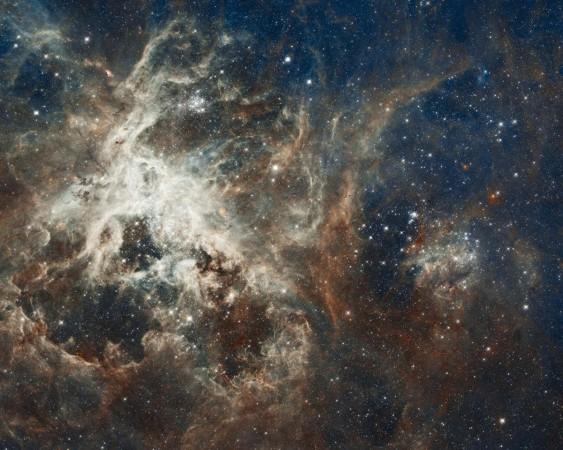Astrophysicists have expected a slowing in the spin of the Milky Way's galactic bar for 30 years, but this is the first time it has been measured. According to the researchers, it provides new insight into the nature of dark matter, which serves as a counterbalance slowing the spin.
Like other galaxies, the Milky Way is assumed to be surrounded by a halo of dark matter that stretches well beyond its apparent boundary. Dark matter is invisible and unknown in its nature, but its existence is inferred from galaxies behaving as if they were covered in substantially more mass than we can see. The Universe is considered to contain around five times as much dark matter as regular, visible matter.
The Milky Way galaxy is a barred spiral galaxy, with a thick bar of stars in the center and spiral arms stretching into the disc beyond the bar. The bar revolves in the same way that the galaxy does.

Researchers examined images from the Gaia space telescope of a massive collection of stars known as the Hercules stream, which are in resonance with the bar, meaning they revolve around the galaxy at the same rate as the bar's spin. The rotating bar has gravitationally captured these stars. A similar thing happens when Jupiter's Trojan and Greek asteroids orbit Jupiter's Lagrange points (ahead and behind Jupiter). If the bar's spin slows, these stars should travel further out in the galaxy, keeping their orbital period in sync with the bar's spin.
The researchers discovered that the stars in the stream have a chemical fingerprint: they are richer in heavier elements (referred to as metals in astronomy), indicating that they have traveled away from the galactic center, where stars and star-forming gas are about ten times as rich in metals as the outer galaxy.
Using this information, the scientists calculated that the bar, which is made up of billions of stars and trillions of solar masses, has reduced its rotation by at least 24 percent since its formation.
"The counterweight slowing this spin must be dark matter. Until now, we have only been able to infer dark matter by mapping the gravitational potential of galaxies and subtracting the contribution from visible matter. Our research provides a new type of measurement of dark matter - not of its gravitational energy, but of its inertial mass (the dynamical response), which slows the bar's spin" said Co-author Dr Ralph Schoenrich.
Co-author and PhD student Rimpei Chiba said, "Our finding offers a fascinating perspective for constraining the nature of dark matter, as different models will change this inertial pull on the galactic bar. Our finding also poses a major problem for alternative gravity theories - as they lack dark matter in the halo, they predict no, or significantly too little slowing of the bar."











